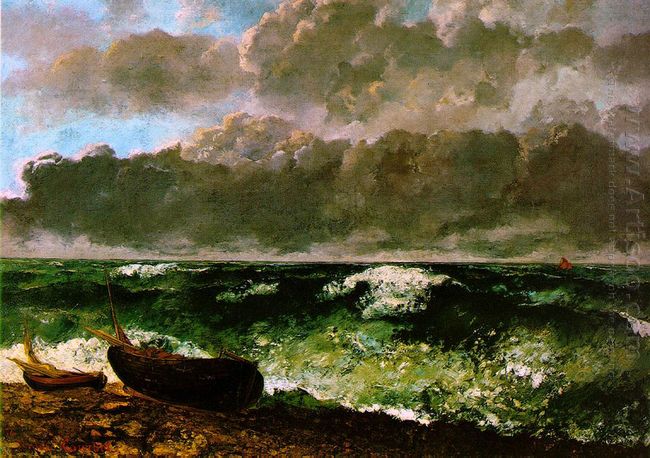Although the performance of the Mediterranean seascape was always the calm torpid sea, the English Channel looked out from the Normandy coast was rolling a storm and wave scene. The waves were kept to the precipitous rock faces and sheer cliffs roll up and shatter.

In the summer of 1869, Courbet stayed in the tower and painted a series of sea billowing seascapes, and entitled them The Stormy Sea. His painting technique was quite different from that of other impressionist painters. Other impressionist painters tried to show the restlessness state of the motion of the waves, which was a fleeting scene. But Courbet was on the contrary. He faced the magnificent natural wonders and what he pursued was the absolute existence. He treated the waves just like treating a tree or a rock and carefully studied their shape, size as well as the quality. Courbet came from the countryside and liked the concrete and real things. Such trait appeared in his paintings and produced a kind of Special Forces, making the real things out of myth. The instinct idealization of solid unchanging things would make Courbet’s modeling language have the absolute power. This seascape painting was the most memorable one among his series of sea view paintings. Courbet especially focused on the depiction of the clouds, and tried to find out the new relationship between the painting and the color. The waves like a bubble clouds, sunset afterglow and the grey prospect made all blend into one harmonious scene as a whole.